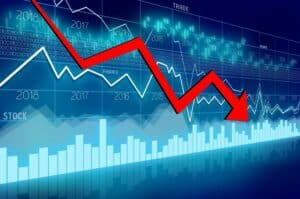The commodities market and commodity derivative contracts have been developing regularly for 25 years. They allow investors to diversify their assets. Also, these contracts are today available to retail investors thanks to many brokerage platforms. For the rest of the commodity derivatives contracts, their execution takes place on the stock exchanges.
The demographic growth and the development of emerging countries induce an increase in demand for global raw materials. Thus, the commodities derivatives market is a bull market. However, the commodity market experienced a logical decline. The fall followed the 2007 subprime crisis and the drop in demand for commodities in many industries.
What are Commodity Derivatives?
So, what are commodity derivatives? In fifteen years, derivative instruments with raw materials as their underlying assets have experienced remarkable development. Hence, the development of commodity derivative meaning.
Commodity derivatives are contracts whose value is determined by an underlying asset. The seller of the contract does not necessarily have to own the asset.
Instead, the seller can give the buyer the money to acquire it or make another derivative contract. Also, these contracts are ideal to hedge investments and to speculate. So, if a trader wants to speculate on a derivative, he can make a profit. Particularly, if the price of his purchase is lower than the price of the underlying asset.
Main Categories of Underlying Commodity Assets
Regarding commodity derivatives or contracts, there are two main categories of underlying commodity assets. These are soft and hard commodities.
The first group includes agricultural products such as cereals and oilseeds, cocoa, coffee, sugar, cotton, etc.
The second group comprises energy materials, such as coal, oil, gas. It also includes metals such as base metals and precious metals and materials used in the chemicals industry.
Given that commodities are mainly suitable for industrial goods production, uncertainty in commodity prices makes the businesses erratic. It also subjects traders to uncertain risks.
The Use of Commodity Derivatives Contracts to Hedge Risk
Price risk is inherent in commodities and commodity derivatives, and this risk is not easy to manage. Futures contracts and Options are the most usual commodity derivatives products. For a very long time, futures contracts were the only instruments available to protect traders against price risks.
In 1982, the first options contracts traded on organized markets appeared. Thanks to this new financial instrument, professionals were able to broaden their management possibilities.
From 1985, new contracts emerged in the context of over-the-counter contracts. First and second-generation swaps and options products complement the range of tools available.
OTC Commodity Derivatives Markets
The OTC markets connect two counterparties. The OTC contracts are generally very specific. The place and date of delivery and the quantities delivered are fixed for meeting the particular needs of both parties involved.
Buyer and seller are not protected in the event of default by the counterparty. Finally, the position of the buyer and seller can hardly be traded on a secondary market. It is generally unwound at the end of the contract.
The final transaction may be of a physical or financial nature. Physical delivery means against the payment of the forward price agreed in advance.
Or the transaction can be financial. This means an exchange of the “spot” price of the raw material at the expiration date. As opposed to making the payment of the price agreed in advance.
Futures Contracts
Organized futures markets (“futures” markets) differ from over-the-counter markets in several aspects. Futures contracts traded are no longer private but traded on a stock exchange. Futures contracts are subject to high standardization of the quantities exchanged, place, and dates of delivery of each contract. Clearing House endorses the counterparty’s risk.
It plays the middle man role between buyers and sellers. The clearinghouse asks both parties to file a “Margin deposit” as collateral at the time of the transaction. It then proceeds to the “Clearing” (or “clearing”) of positions at the end of each trading day. If the price goes up, the buyer’s account gets the credit of an amount corresponding to the unrealized profit.
Commodity Derivatives Options
Options contracts make it possible to protect against risks while taking advantage of favorable market price movements. This is something futures contracts cannot do. Option markets coexist with the futures markets.
For example, the buyer of a “call option” has no obligation to buy raw material in the future at a given price (“the strike price”). This contract includes the payment of a premium by the purchaser of the option at the time of signing.
Commodity Derivatives Swap Contracts
The credit default swap is a derivative product. It makes it possible to insure against the risk of non-payment of a debt issued by a State or a company. It is a contract that is similar to insurance. The buyer of the credit default swap (CDS) pays an annual commission to the seller in return.
The seller undertakes to compensate for the reference asset’s losses in case of an event occurring. CDS is a credit protection contract.
The contract must indicate the reference asset. As well as, the amount of the premium that the buyer needs to pay for the benefit of the seller. And lastly, the contract’s expiry date.












One Response
I just added this website to my feed reader, excellent stuff. Can’t get enough!